
ASN Wikibase Occurrence # 147600
This information is added by users of ASN. Neither ASN nor the Flight Safety Foundation are responsible for the completeness or correctness of this information.
If you feel this information is incomplete or incorrect, you can submit corrected information.
| Date: | Sunday 12 August 2012 |
| Time: | 14:45 |
| Type: |  de Havilland DH.82a Tiger Moth |
| Owner/operator: | Martin Paul Waring |
| Registration: | G-AHLT |
| MSN: | 82247 |
| Year of manufacture: | 1939 |
| Engine model: | De Havilland Gipsy Major 1C |
| Fatalities: | Fatalities: 0 / Occupants: 1 |
| Aircraft damage: | Substantial |
| Location: | Eryrys, 5 miles South of Mold, Flintshire, North Wales -
 United Kingdom United Kingdom
|
| Phase: | En route |
| Nature: | Private |
| Departure airport: | Staverton, Cheltenham, Gloucestershire *EGBJ) |
| Private grass airstrip, Eryrys, 5 miles South of Mold, Flintshire | |
| Investigating agency: | AAIB |
| Confidence Rating: |
de Havilland DH.82a Tiger Moth MSN 82247 (Gipsy Major #81150): Taken on charge as N9128 at 6 MU RAF Brize Norton, Oxfordshire 15.8.39. To 5 Coastal Patrol Flight, Carew Cheriton 1.5.40 coded “MW”. To 45 MU RAF Kinloss 27.6.40. To 11 EFTS RAF Perth/Scone, Perthshire 25.2.41. To 19 FTS RAF Cranwell, Sleaford, Lincolnshire 22.7.45. To 5 MU RAF Kemble, Gloucestershire 27.2.46 for storage pending disposal.
Struck off charge when sold 16.5.46 to Walker & Thompson. UK civil registered as G-AHLT (CofR 10166/1) 2.5.46 to Eustace George Edward Walker & Frederick William Thompson, t/a Walker & Thompson, Hythe, Kent (aircraft based at Lympne, Kent). C of A 8039 issued 14.5.47. C of R No changed to R889 1950. Crashed at Postling Wood, Hythe, Kent 28.6.57.
Withdrawn from use and stored at Lympne, Kent pending rebuild; latterly to Thompson’s garage, where reportedly burnt out in fire. Regsitration G-AHLT cancelled 12.10.62 as sold (CAA not notified until 24.10.65). Re-registered (C of R R889/2) on 26.10.65 to Frederick William Thompson, t/a Walker & Thompson, Lympne, Kent.
Regsitration cancelled 9.7.67 and re-registered (C of R R889/3) on 3.8.67 to Peter Raymond Holmes, Ramsgate, Kent (aircraft based at Manston, Kent). Regsitration cancelled 17.11.67 and re-registered (C of R R889/4) 4.12.67 to Thanet Flying Club Ltd, Broadstairs, Kent (aircraft remained based at Manston). Regsitration cancelled 30.10.73 and re-registered (C of R R889/5) 9.4.74 to Roger Cecil Frank Bailey, Herrings Farm, Cross-in-Hand, Heathfield, Sussex. Partly rebuilt in the early 1980s and offered for sale in 1986 [but not sold]. Registration G-AHLT cancelled by CAA 19.7.89 as "Withdrawn From Use".
Re-registered (C of R G-AHLT/R6) on 21.11.89 to same owner (now at Swinmore Farm, Munsley, Ledbury, Herefordshire). To Ben Borsberry, Kidmore End, Reading [1990] for rebuild; C of A renewed 10.4.97; now based at Ludlow, Shropshire. Re-registered (C of R G-AHLT/R7) on 1.5.98 to Kevin John Jarvis, Southend-on-Sea, Essex (aircraft based at Wheathamstead). To Seppe, Beda, Netherlands 7.2000 [with owner]; returned to Lee-on-Solent, Hampshire [6.2003]. Sold 16.2.2004 and re-registered (C of R G-AHLT/R8) 24.2.2004 to Martin Paul Waring, Henley-on-Thames [aircraft based at White Waltham, Maidenhead, Berkshire].
Badly damaged in crash Eryrys, 5 miles South of Mold, and 8 miles West of Wrexham 12.8.2012. Accoarding to the AAIB Report into the accident:
"The accident occurred soon after the pilot had completed a multiple-leg tour of France, totalling 28 flying hours. Some three years earlier, the pilot had identified a field near Mold, North Wales for possible use as a landing site. On the day of the accident he intended to fly there on a short positioning flight from a field a few miles to the south, and obtained permission from the landowner to use the new field.
The pilot walked it twice on the morning of the accident and was aware that it was a difficult landing site, approximately 200 yards (183 m) long, of which about 170 yards (155 m) was useable.
The field sloped steeply upwards for its first half and less steeply for the second half. The pilot had measured the Tiger Moth’s nil-wind landing roll on a flat grass surface as 120 yards (110 m), so estimated it would stop within about 50 yards (46 m) when the upslope was taken into account. The landing direction was to the north.
Crossing the northern end of the field were a small earth bank, a low fence, two trees and power and telephone lines at a height of about 50 ft. It was evident to him that any go-around decision would need to be made in good time, and would require careful flying to avoid the wires and trees. However, as the pilot had recently completed a lengthy series of flights and therefore had a good deal of recent flying practice, he was confident that a safe landing could be made.
On arrival at the field after the short positioning flight, the pilot made a flypast to assess the site. Conditions were fine, with a light and variable wind and a temperature of 20°C. The pilot abandoned the first approach to the field because the aircraft was too fast. The airspeed on the second approach was 55 mph, but the pilot felt he could decelerate to 50 mph by the start of the field (the aircraft’s stall speed was 45 mph). However, as the aircraft crossed the hedge at the start of the field, the pilot became aware that the aircraft was still too fast to land safely, yet also now too low to be able to climb above the obstacles at the far end.
The main wheels touched down at the top of the steeply sloping section of field. Speed was still above the stall and the aircraft bounced, touching down again about 70 yards (64 m) before the end of the field. The pilot opened the throttle part way with the intention of maintaining flying speed and flying between the trees.
Concentrating mainly on flying through the gap between the fence and the wires, the aircraft’s right wing tip struck branches of one of the trees. The pilot ducked and protected his head. He was aware only of rolling sensations until the aircraft came to a stop, resting on its right side and pointing back in the direction from which it had come. He quickly made switches safe, released his straps and vacated the badly damaged aircraft.
In his report, the pilot observed that the choice of landing site was not a good one and that he had not adhered to his own pre-flight plan to go-around if the approach was not entirely satisfactory".
The crash location of Eryrys is about five miles south of Mold and eight miles west of Wrexham out past Coedpoeth and is one of the highest villages in Wales.
Nature of Damage sustained to airframe: Per the AAIB report "Right side wings and tail plane destroyed, propeller destroyed". To Paul Groves/Crofton Air Service at Lee-on-Solent, Hampshire; rebuilt for owner and first reflown after rebuild 1.10.2018. Permit to Fly issued 30.10.18. Currently registered.
Accident investigation:
 |
|
Sources:
1. AAIB Bulletin: 10/2012 G-AHLT EW/G2012/08/06: https://assets.publishing.service.gov.uk/media/5422f03de5274a13170002f7/DH82A_Tiger_Moth_G-AHLT_10-12.pdf
2. CAA History of G-AHLT 1946-62: https://cwsprduksumbraco.blob.core.windows.net/g-info/HistoricalLedger/G-AHLT-1.pdf
3. CAA History of G-AHLT 1965-74: https://cwsprduksumbraco.blob.core.windows.net/g-info/HistoricalLedger/G-AHLT-2.pdf
4. https://air-britain.com/pdfs/production-lists/DH82.pdf
5. http://www.airhistory.org.uk/dh/p822.html
6. http://www.bbc.co.uk/news/uk-wales-19236811
7. https://www.itv.com/news/wales/2012-08-13/tiger-moth-plane-crash-in-pictures
8. https://www.wrexham.com/news/plane-crashes-wrexham-10933.html
9. https://www.key.aero/forum/historic-aviation/121582-tiger-moth-badly-crunched-near-wrexham-pilot-ok
10. https://derbosoft.proboards.com/thread/10236/tiger-moth-crash-wales
11. https://en.wikipedia.org/wiki/Eryrys
Media:
Tiger Moth G-AHLT at Wolverhampton (Halfpenny Green) Airport 03-09-2009:
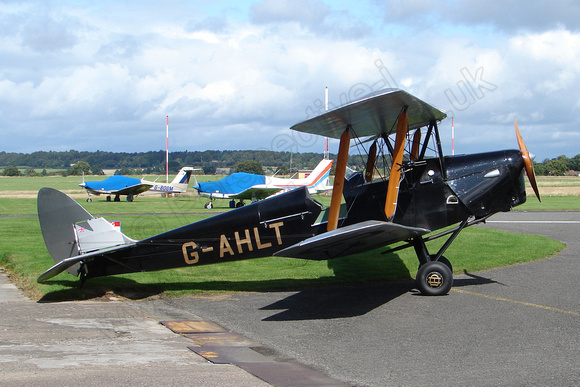

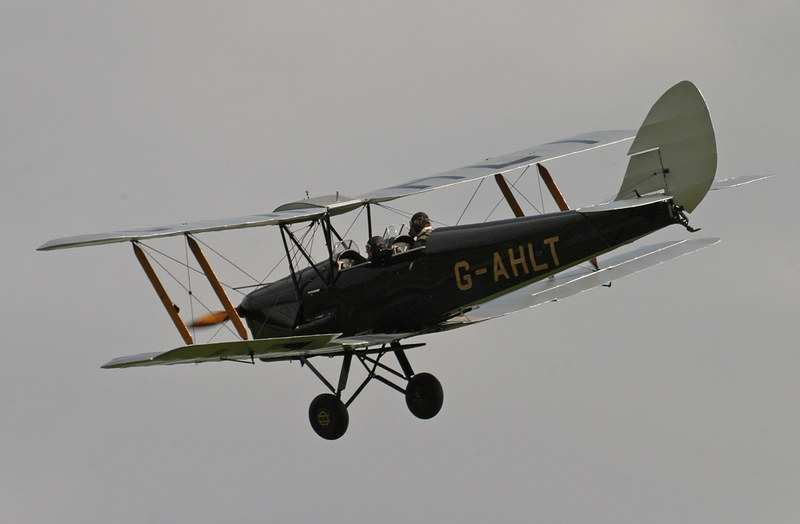
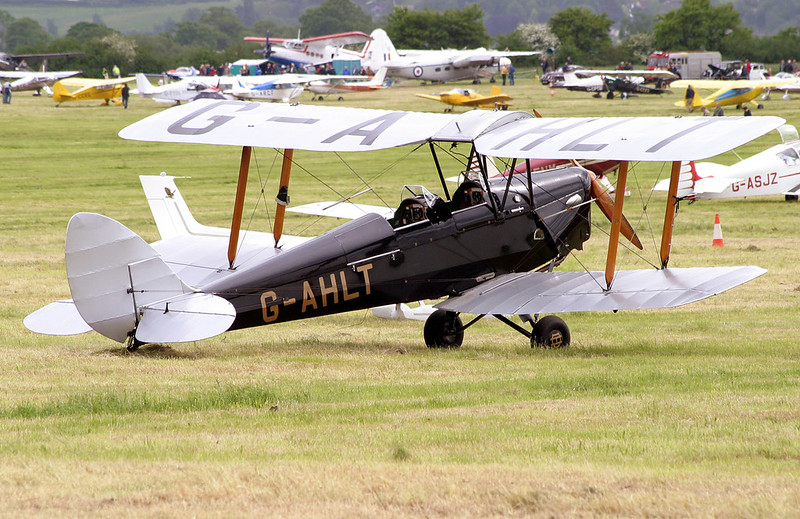
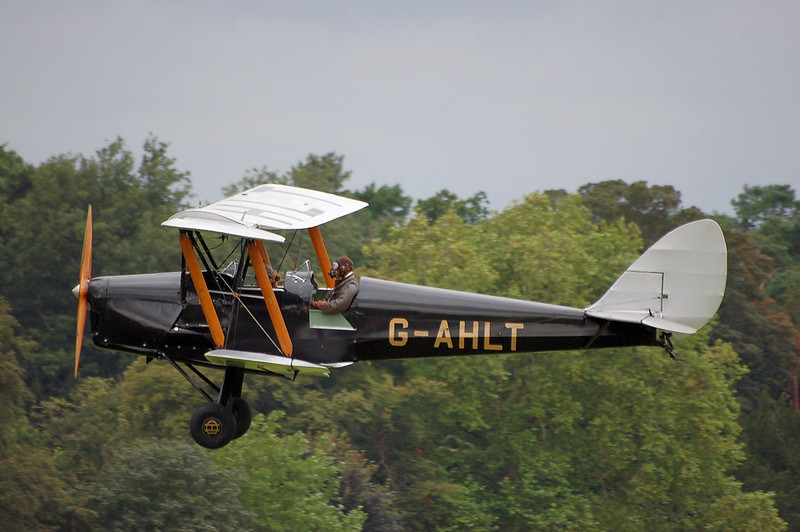
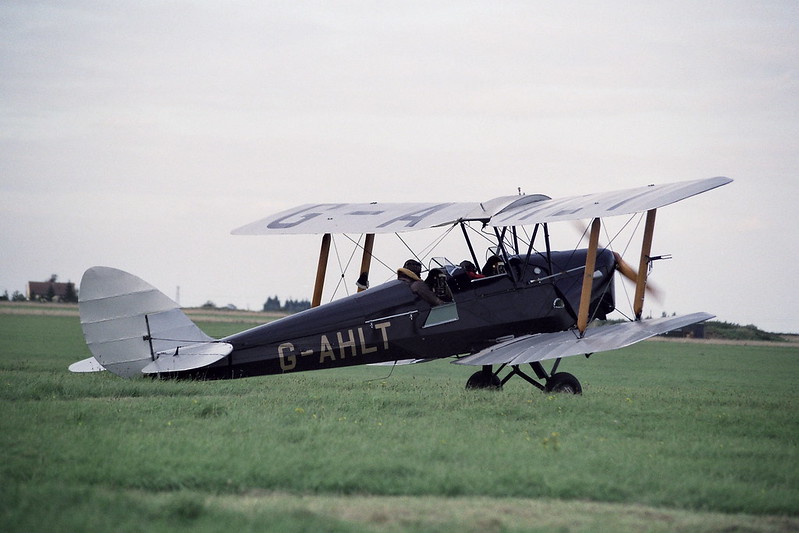
Revision history:
| Date/time | Contributor | Updates |
|---|---|---|
| 12-Aug-2012 22:03 | timpman | Added |
| 13-Aug-2012 07:54 | timpman | Updated [Time, Registration, Total occupants] |
| 13-Aug-2012 07:55 | harro | Updated [Aircraft type, Registration, Total fatalities, Other fatalities, Narrative] |
| 18-Aug-2012 15:37 | Dr. John Smith | Updated [Operator, Phase, Nature, Source, Damage] |
| 13-Oct-2012 02:42 | harro | Updated [Registration, Cn, Destination airport, Source, Narrative] |
| 13-Oct-2012 15:43 | Dr. John Smith | Updated [Location, Source, Embed code] |
| 16-Sep-2015 18:48 | Dr. John Smith | Updated [Operator, Source] |
| 05-Jan-2017 16:29 | Dr. John Smith | Updated [Time, Operator, Location, Destination airport, Source, Embed code, Narrative] |
| 05-Jan-2017 16:30 | Dr. John Smith | Updated [Source] |
| 05-Jan-2017 16:35 | Dr. John Smith | Updated [Source, Narrative] |
| 09-Feb-2022 19:20 | Dr. John Smith | Updated [Operator, Location, Departure airport, Destination airport, Source, Embed code, Narrative, Category] |
Corrections or additions? ... Edit this accident description
The Aviation Safety Network is an exclusive service provided by:


 ©2024 Flight Safety Foundation
©2024 Flight Safety Foundation